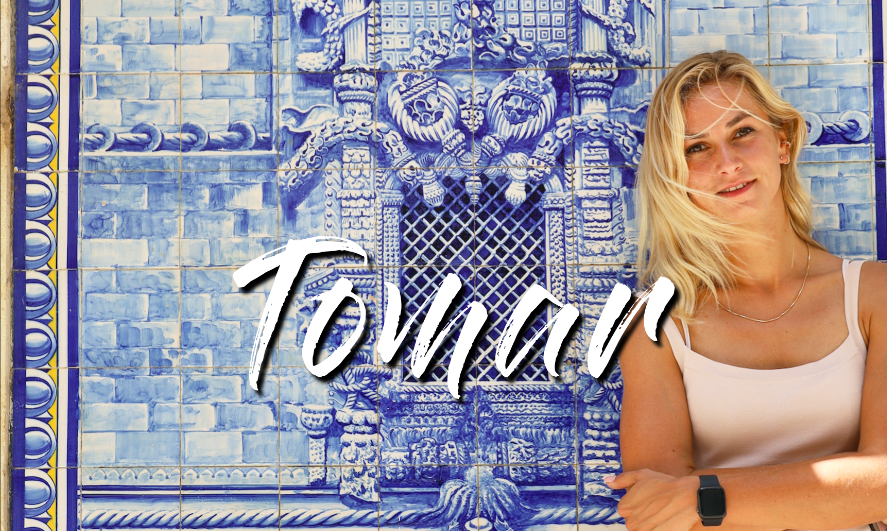
When traveling in Portugal, you cannot miss the charming town of Tomar, which became famous all over the world because of the Templars. The city is located in the Ribatejo Province in central Portugal, next to Nabão river. The medieval streets of Tomar are nice for walks, the old town is full of cafes with local sweets and restaurants with Portuguese specialties. The city is famous for the convent of the Order of Christ (Convento de Cristo) – one of the four most valuable monasteries in Portugal. The festival Festa dos Tabuleiros (basket / tray festival) takes place in Tomar every four years: it’s one of the oldest and certainly the most colorful festivals in Portugal. Another interesting event is Festa Templária: a medieval event centered around the Templar theme. Are you going to Portugal? Are you looking for interesting places to visit, adventures, beautiful landscapes? Find out what to see in the Portuguese town of Tomar, where and what to eat, where to stay overnight and what attractions to expect.

What to see in Tomar city?
In Tomar life goes on in a lovely Portuguese rhythm, you can chill down here but also you can use your energy to check all the attractions. Park easily in the center and go walking to all the interesting sites. Only the monastery of the Order of Christ is situated on a hill above the city: you can walk up to it or take the tourist train from the city center. Lunch in one of the local restaurants is a great plan, especially those by the river, offering views of the green park and Nabão river. It is worth spending half a day in Tomar and then explore the attractions in the area. Discover what to see in Tomar.
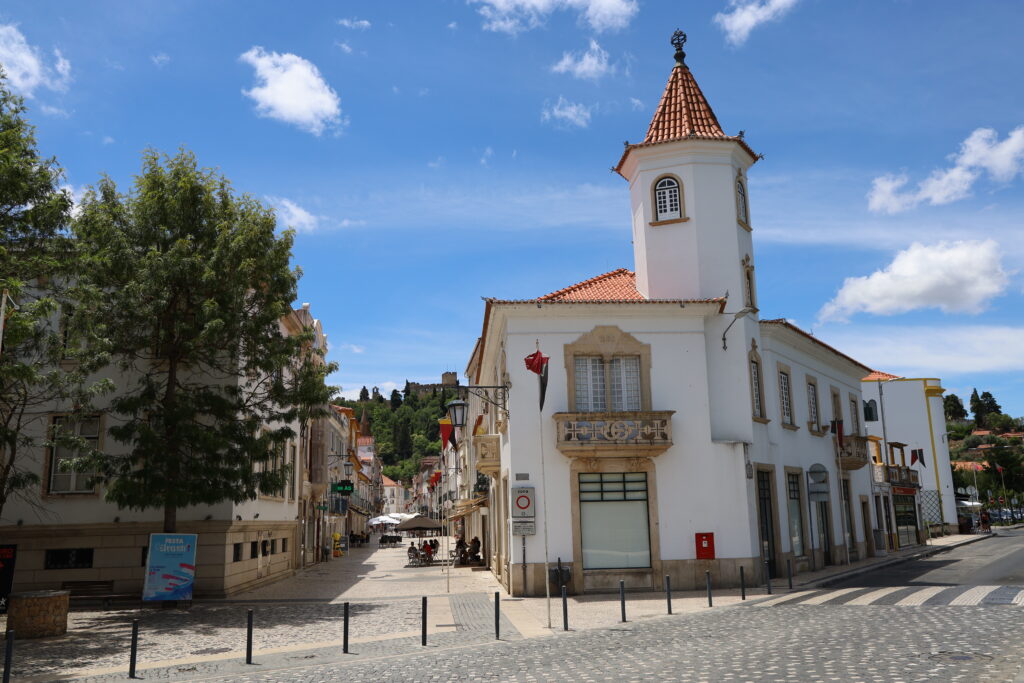
Praça da República in Tomar – The main town square like a chessboard
At the main square in Tomar: Praça da República I was enchanted by the surface made of black and white Portuguese cobble stone (calçada portuguesa), resembling a chessboard. In the center of the square there is a monument: the knight Gualdim Pais: the Grand Master of the Templar Order, who founded a monastery built over the city. There are several cafes at the square and a church (Igreja de São João Batista) with a beautifully decorated main entrance. The Igreja de São João Batista (Church of St. John the Baptist) is from the 15th century, its interior is a three-nave basilica, and the naves are separated by columns with differently carved capitals. The beautiful Manueline pulpit is decorated with intricate stone carvings.
Address: Rua de São João, www.igrejadesjoaobaptista.blogspot.com; Tue – Sun 9.00-12.00 and 15.00-19.00.

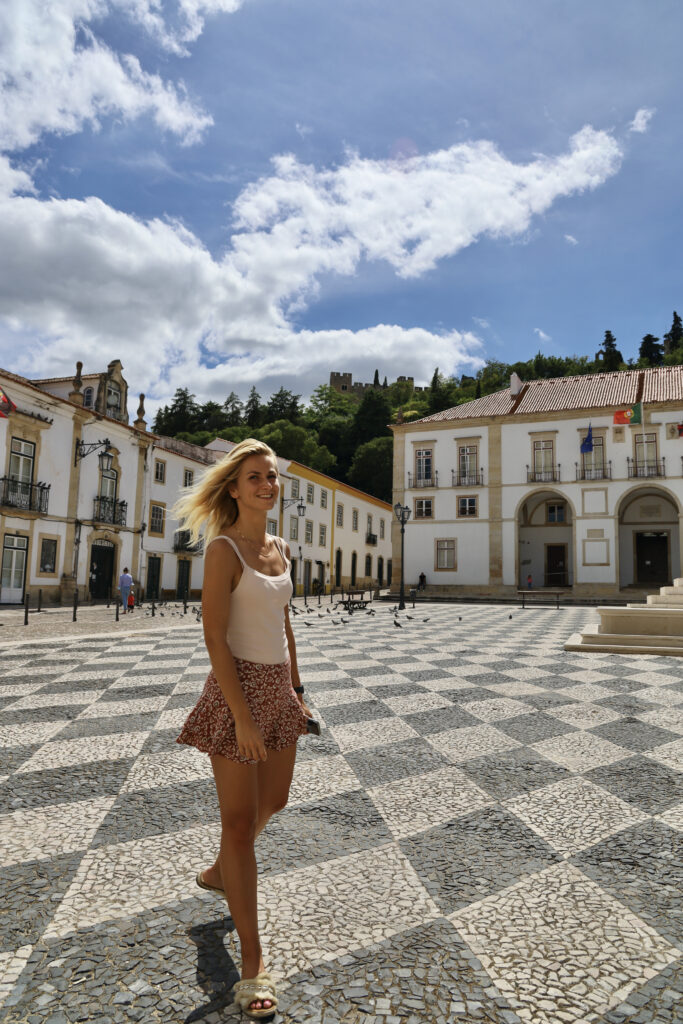
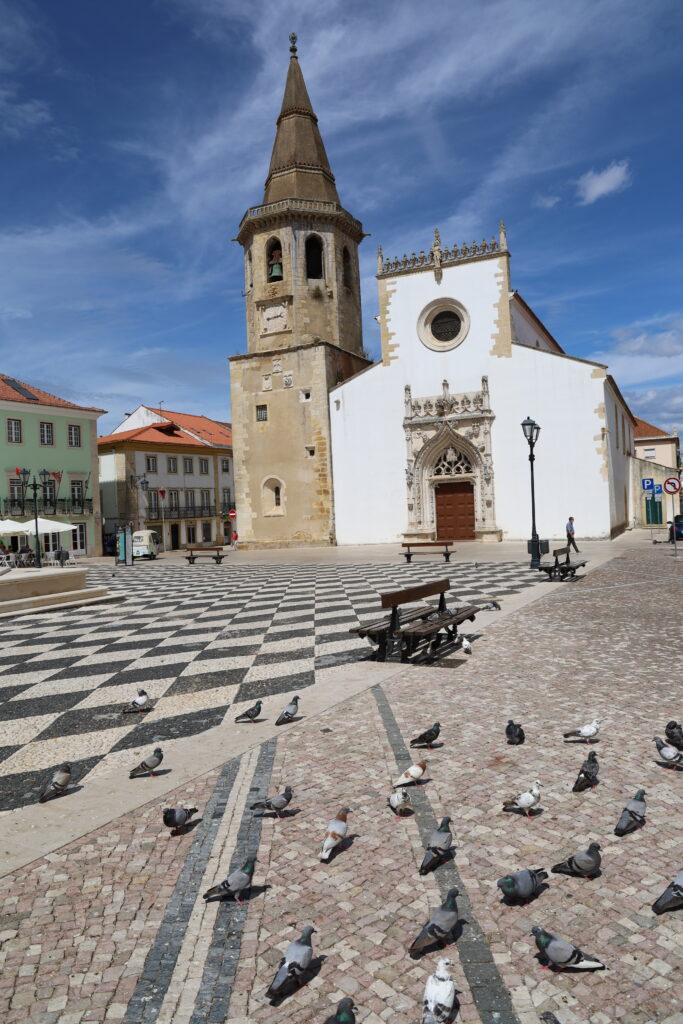
Synagogue in Tomar
South from the main square (Praça da República), on Rua Dr. Joaquim Jacinto, there is an old and mysterious synagogue – the only example of pre-Renaissance Jewish architecture in Portugal. It dates from 1430-1460, but was closed already in 1496 on the order of Manuel I. Currently, it houses the Museu Luso-Hebraico Abraham Zacuto (Luzo-Hebraic Museum named after Abraham Zacuto): its name commemorates a famous Jewish astronomer who helped Vasco da Gama complete the navigation equipment.
Address: Rua Dr. Joaquim Jacinto 73, phone 249322427, www.aast.ipt.pt; October – June every day 10.00–13.00 and 14.00–18.00, June – September 10.00–13.00 and 14.00–19.00.
Convento de Cristo – the main attraction of Tomar
All the adventurers and enthusiasts of Templar history reach the city to see and visit this building. The construction of the monastery of the Order of Christ was initiated in 1162 by the Grand Master of the Knights Templar, Gualdim Pais (died 1195). At the beginning of the thirteenth century, Philip II, the king of France indebted to the Templars, decided to destroy the order. The Knights of the Temple survived only in Portugal, though under a changed name, as the Order of Christ. The most important people in the country made part of it including Vasco da Gama and Henry the Navigator (who was a great master of the order).

The central part of the complex is made of an unusual church, almost entirely surrounded by monastic buildings. Inside, the oldest and most important object is the mysterious round Charola – the original temple built on a sixteenth-side plan in the Romanesque style (second half of the 12th century). The prototype was the rotunda of the Church of the Holy Sepulcher in Jerusalem. Large recesses indicate that the monks attended the masses sitting on their horses, can you imagine that? In the middle there is an unusual, openwork “column”, consisting of six pillars connected above each other – it houses the altar. The rest of the church, which was added in the years 1510-1515 as a nave to the chancel arranged in Charola, also dates from the Manueline times.

The Manueline window in the Convento de Cristo is certainly the most famous window in Portugal. it was made by Diogo de Arruda in the years 1510–1513. The window in the Convent of the Order of Christ in Tomar (called Janela Manuelina or Janela do Capítulo in Portuguese) is considered the most representative example of Portugal’s Manueline style, which combines Gothic with nautical sculptures and oriental elements. At the very bottom you can see a sculpture of a bearded man: apparently this is a self-portrait of the artist.



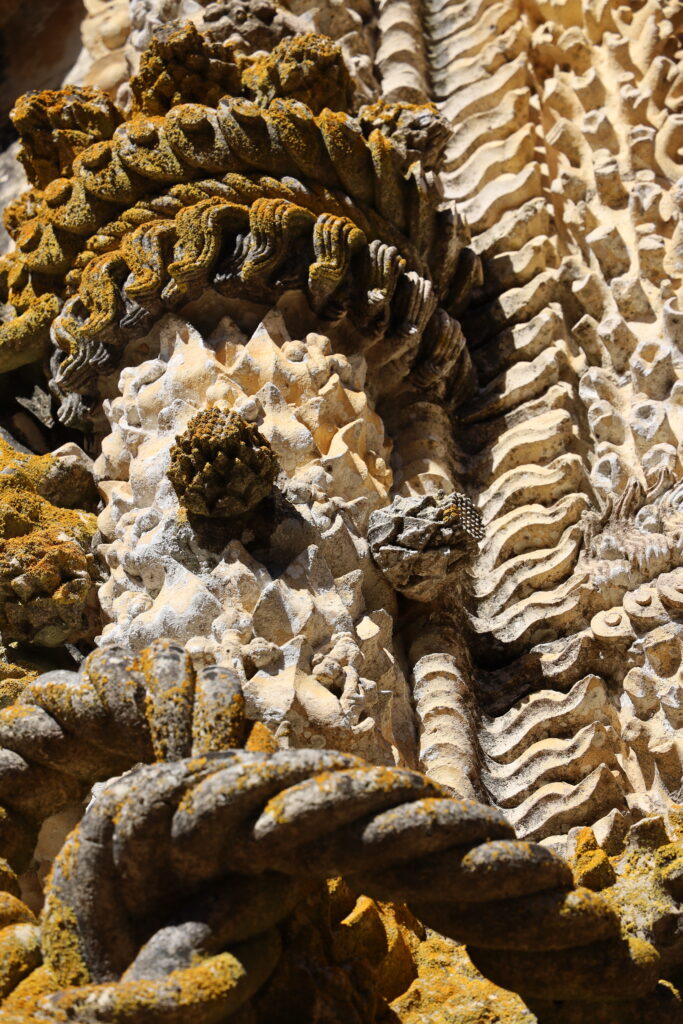
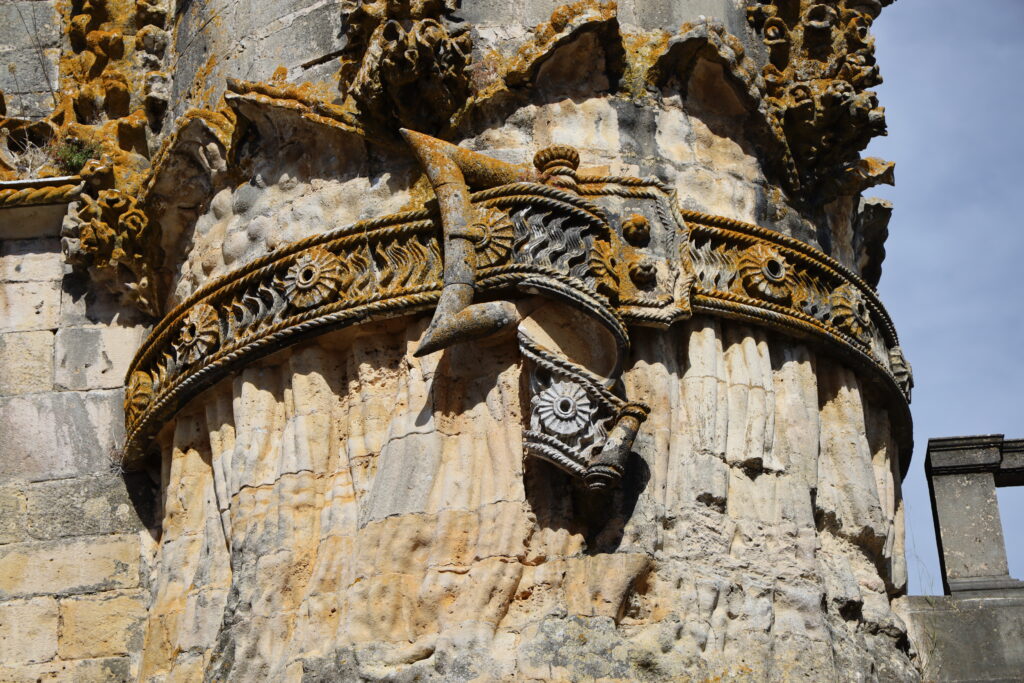
On the south side of the church you will find Claustro Principal – the courtyard considered the most important in the whole monastery. The first cloisters were built in the years 1530–1533 by João de Castilho, but during the reign of Jan III, they were partially demolished. Jan III was not a fan of the Manueline style, over which he preferred the then fashionable Renaissance. The elegant simplicity of the arcades with Greek and Tuscan columns and gentle arches make them the most beautiful work of Renaissance art in Portugal. The spiral staircases in the corners are interesting, leading to the Terrace of Wax (Terraço de Cera), where the monks dried honeycombs.

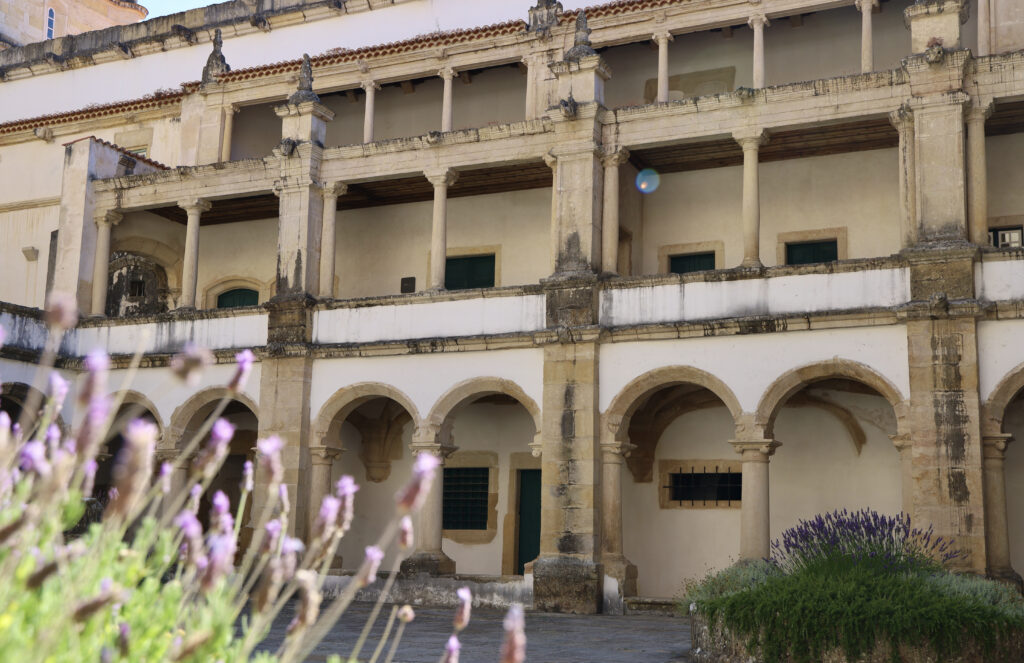

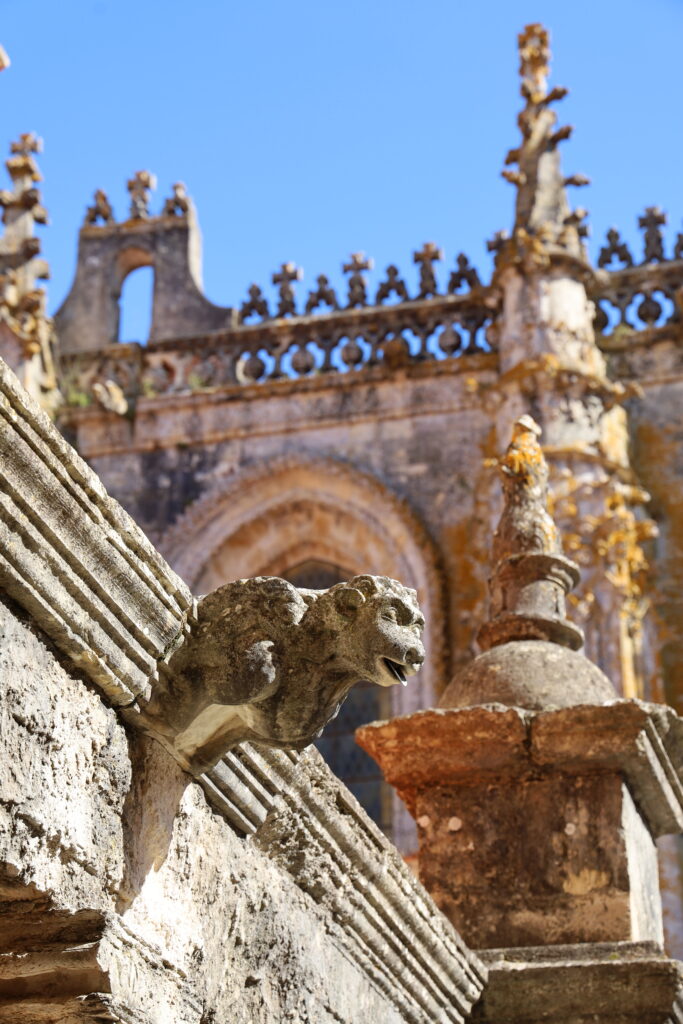
On the west side of the complex there are two courtyards, surrounded by quite similar arcades designed by João de Castilho: Claustro dos Corvos (The Cloister of the Raven; 1537-1546) and Claustro de Micha (The Cloister of Bread; 1543-1550). Claustro do Cemitério (Cemetery Cloisters) was built by Fernão Gonçalves at the behest of Henry the Navigator (1st half of the 15th century). Funeral ceremonies for monks took place there. On the eastern side, they are adjacent to the Claustro da Lavagem (Laundry Cloisters), also from the times of Henry the Navigator (1426–1453). You have to go to the monastery or take the tourist train running from the center (price 3 € / 1.50 €). Next to the monastery there is a Templar castle from 1160, with well-preserved walls and the main tower.
Address: Colina do Castelo, telephone: 249315089, www.conventocristo.pt; June-September every day 9.00–18.30, October – May 9.00–17.30; € 6, schoolchildren, students and over 65y old €3, up to 12 years free entrance, combined ticket with the monasteries of Batalha and Alcobaça: € 15.
What else to see in Tomar
Praça Infante Dom Henrique: This small square is home to a neo-Renaissance building from 1933 (headquarters of the tourist information office), built using elements from 16th century palaces. Next to it there is a medieval hospital with a nice terrace, and opposite is the entrance to the Mata Nacional dos Sete Montes (forest that functions as a large city park, opening hours: 9.00-18.00).
Museu dos Fósforos: Further south, in Convento de São Francisco, there is the Match Museum, which has the largest collection in Europe (I was surprised to find many boxes from Poland).
Address: Avenida General Bernardo Faria, www.museudosfosforos.vidasmundanas.net; every day in summer 10.00–19.00, in winter 10.00–17.00.
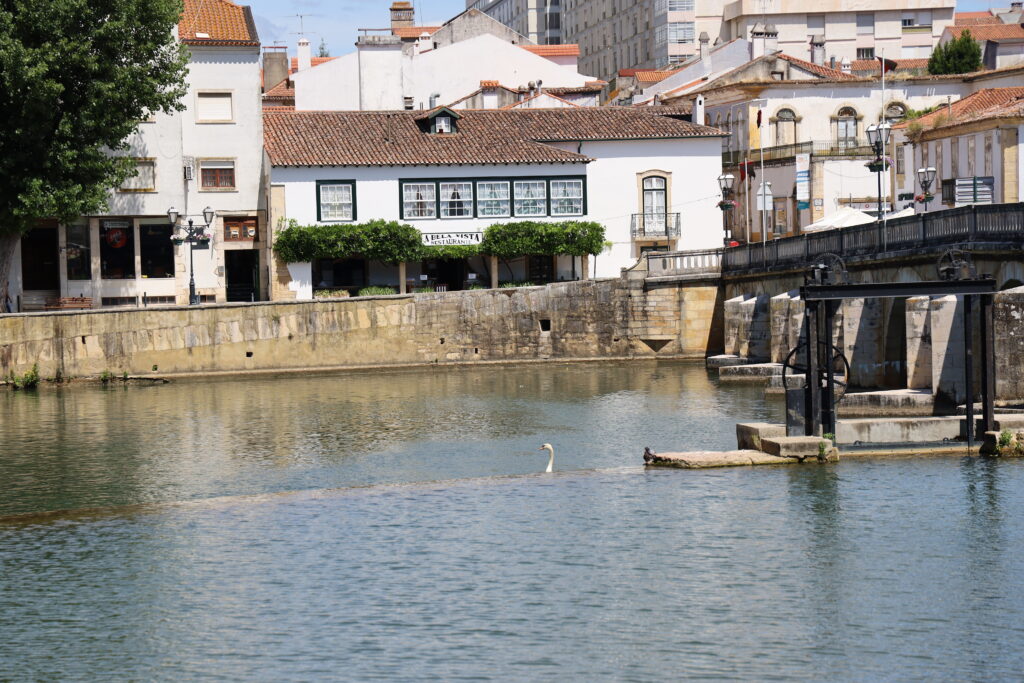
Where and what to eat in Tomar
The Ribatejo region where Tomar is located is famous for its game dishes. The most famous dish is Coelho na abóbora, (a hare baked in a pumpkin) the meat is served inside a vegetable. Another famous regional dish of Tomar is Morcela de arroz (black pudding with blood and rice), which is served with baked potatoes and sautéed greens. Traditional sweets are based on yolks, some still prepared according to old monastic recipes, try the sweet balls beja-me depressa (kiss me quickly) and fatias de tomar (slices from Tomar). Already drooling? Find out Where and what to eat in Tomar
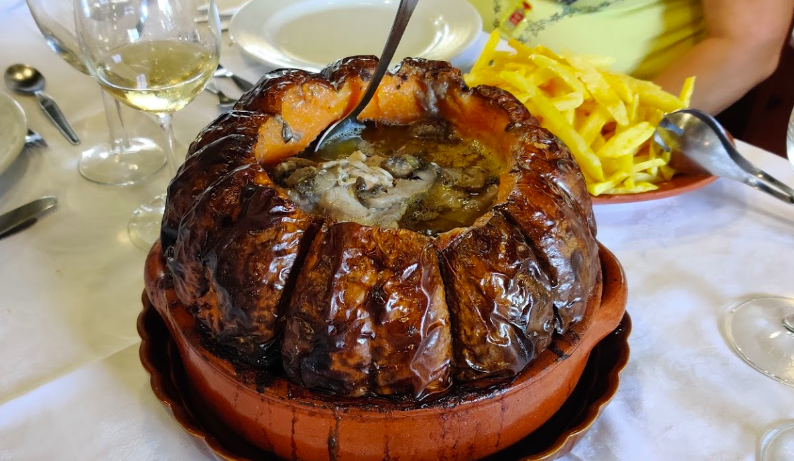
Where to sleep in Tomar
Accommodation offer in Tomar is quite large, you can find five-star hotels, private apartments, rooms at AirBnb and hostels. Most of the facilities are within a few minutes’ walk of the main sights. Get to know my recommended accommodation options in Tomar: Where to sleep in Tomar.
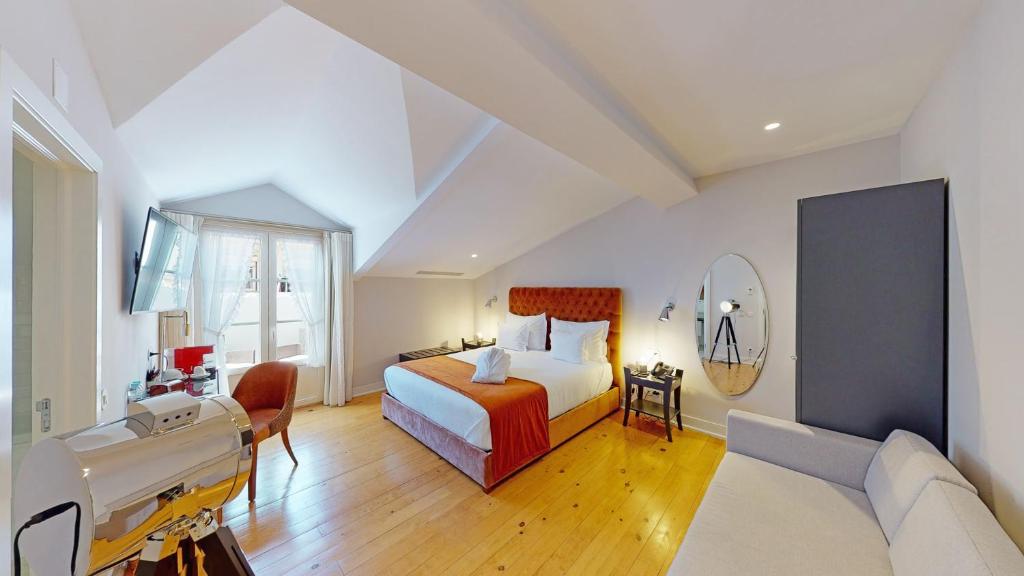
What to see around Tomar
Ribatejo, the region where the city of Tomar is located, is a former Portuguese province in the center of the country. The territory of Ribatejo, in accordance with the latest European administrative division, has been divided between the regions: Alentejo, Center and the Lisbon Region. Are you going to Portugal and want to get to know the surroundings of Tomar? Find out what to see and where to go, discover Portuguese treasures off the tourist trail. Discover medieval castles, beautiful vineyards, delicious food and friendly people.
Read more about what to see neat Tomar

Events in Tomar
The Festa dos Tabuleiros (basket / tray festival) takes place in Tomar every four years: one of the oldest and certainly the most colorful festivals in Portugal. The last one took place in 2019, the next one will take place in 2023. Another interesting event is Festa Templária: a medieval event centered around the Templar theme, accompanied by knights marches, a fair and staging battles.
Have you been to Tomar? Are you enchanted by Ribatejo? Share your impressions 🙂
